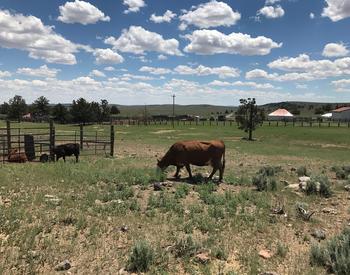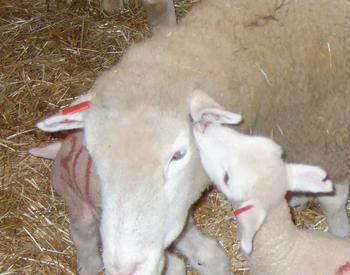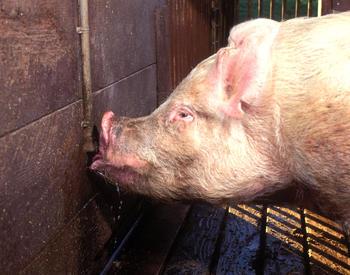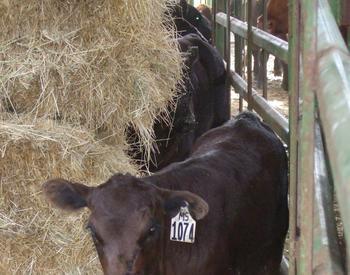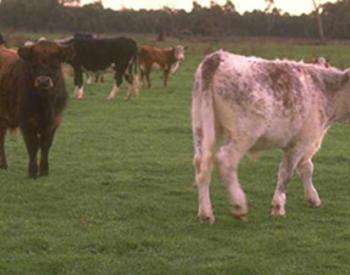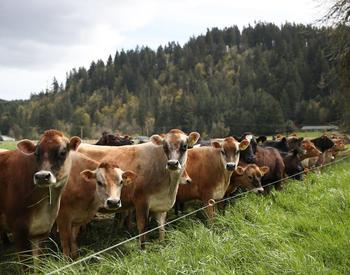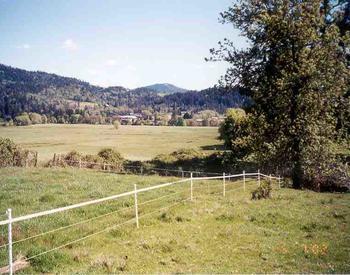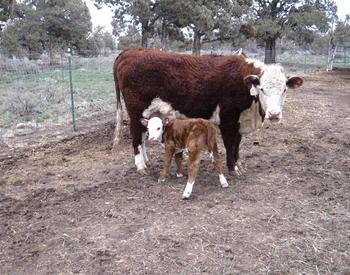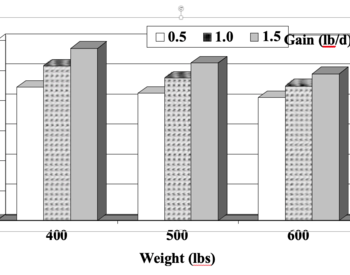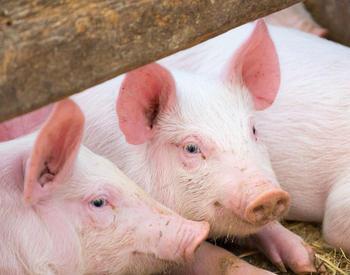Rendering plants once offered quick, affordable pickup of animal mortalities and byproducts. However, recent declines in the price of commodities produced from animal carcasses have curtailed or eliminated many rendering operations in Oregon. Now, sending animal mortalities and byproducts for rendering may no longer be economically viable for many of Oregon’s livestock owners.
Here are some alternate disposal options for animal mortalities and byproducts where rendering services are not available or economical.
Natural disposal
It is legal to simply allow nature to take its course. If you choose this action, Oregon law says you must deposit the dead animal to a location that is at least one-half mile from any dwelling and at least a one-quarter mile from any open waterway and let scavengers eat the carcass. Note that this method of disposal is not acceptable in instances where numerous carcasses must be disposed of, and is not available for disposal of animal byproducts generated during butchering.
You need a large farm or ranch to make this work, and it is the least desirable of the alternatives for many reasons. Animal carcasses left to decay naturally above ground or buried in shallow pits pose a hazard to groundwater and surface water and can jeopardize the health of domestic livestock, wildlife, and pets.
Landfill
Certain permitted landfills are allowed to take small- and large-animal carcasses as well as waste animal byproducts. There may be an extra fee to dump large carcasses and large volumes of animal mortality and byproducts. Call your local landfill to find out if it can accept animal carcasses. Check this list of landfills. If the landfill does not accept animal carcasses, the Oregon Department of Environmental Quality may be able to grant an exception. You would need to work with both the landfill operator and your local DEQ office to see if an exception is possible.
Incineration
Animal mortalities and byproducts can be incinerated in a DEQ-approved incinerator or cremation unit. Operation of an incinerator or cremation unit requires a permit from the DEQ Air Quality program. Economic factors, and limited availability of incineration units in Oregon, currently limit this option.
Animal mortality and byproducts cannot be burned in the open [OAR 340-264-0060(3)]. The open burning of carcasses of animals that have died or been destroyed because of an animal disease emergency is allowed only when authorized by Oregon Department of Agriculture [ORS 596.393 and OAR 340-264-0040(10)].
Burial
It is legal to bury animal mortalities on your farm if your circumstances meet certain requirements and you follow recommendations. The bottom of the hole must be dry (not in a water table). The dead animal should be covered with hydrated lime, and then covered with at least 4 feet of soil mounded up to allow for settling as the carcass decomposes [ORS 601.090(7)]. Burials should be at least 500 feet from surface waters or wells, preferably downhill from any wells. Burial of large animals will probably require a backhoe because an adult cow burial takes a hole approximately 2 feet by 7 feet by 8 feet deep.
This method is not acceptable for disposal of animal byproducts generated during butchering. Burying large volumes of dead animals is not appropriate unless conducted under a Catastrophic Animal Mortality Management Plan. If you bring in animals from other locations to be buried on your farm you may be subject to additional disposal regulations from the DEQ, the ODA, and the local land use planning authority. Contact regulators before burying animals on your property if the animals did not originate from your farm.
Composting
While not the simplest method of disposal, composting allows you to recycle the nutrients in the carcasses and is a sound environmental practice. If you are going to compost animal mortalities and byproducts on your farm, you must have a composting plan on file with ODA, and be implementing that plan. The plan must include a drawing of your composting area, a description of how you will contain any runoff from the compost piles or bins, a description of the process you will use, and a description of how the compost will be used on the farm. Details of the plan and assistance are available from the Natural Resources Division at the Oregon Department of Agriculture, 503-986-4700. If you intend to bring in animal mortality and byproducts from off-farm sites, you will need a composting permit from the DEQ.
The basic composting process is relatively easy. It must be done on concrete or a similar impervious surface that prevents nutrient leaching. In western Oregon, it is wise to have a roof to control moisture added by rainfall. Bins or walls on the compost pile make turning the compost easier. To compost dead animals:
- Start with a 12-inch layer of dry straw, sawdust, or dry manure solids. Drag or lift the carcass onto this layer.
- A small opening in the body cavity will prevent bloating. Some sources recommend cutting open the body cavity and large muscle groups for faster decomposition; however, livestock farmers report this is not necessary.
- Cover the carcass with 2 to 3 feet of manure solids, sawdust, or other carbon sources. Maintain moisture in the pile about like silage — damp, not wet. Add more manure solids or other carbon material such as sawdust, and water as needed.
- The pile must heat to over 131° Fahrenheit for at least three days to kill human and animal pathogens. The pile will be ready to turn in 15-30 days and will need to be turned about five times. The carcass should be fully composted in about 180 days.
- Some literature recommends reusing some of the finished compost as the base for the next pile. Up to 30% of the total volume of the base material required can be from the finished compost. Also, some of the leftover bones can add structure to the foundation material for enhanced aeration.
Applying this compost to crops directly consumed by people is not currently recommended. The Cornell Waste Management Institute has stated that the compost can be used on hay, corn, winter wheat, tree plantations, and forestland.
Caution
It is unclear whether prions, the proteins that cause bovine spongiform encephalitis, or mad cow disease, are destroyed in the composting process. Animals showing signs of a neurological disease must be reported to the ODA and disposed of in an appropriate manner. Animals that show signs of a neurological disease, and those with anthrax, should not be composted.
Additional resources
- Oregon Department of Environmental Quality composting website
- Oregon Department of Agriculture Animal Carcass Disposal Brochure
- Oregon Revised Statutes, Chapter 601 - Dead Animals
- National Renderers Association Membership Directory
- Mukhtar, S.; Auvermann, B.; Heflin, K.; Boriack, C. A Low Maintenance Approach to Large Carcass Composting. American Society of Agricultural Engineers Meeting Paper No. 032263. St. Joseph, Mich. ASAE, 2003.
- Bonhotal, J.; Telega, L.; Petzen, J. Natural Rendering: Composting Livestock Mortality and Butcher Waste--Fact Sheet. Cornell Waste Management Institute Educational Resources, 2002.
- NRCS, NHCP. Natural Resources Conservation Service (NRCS) Conservation Practice Standard 316-Animal Mortality Facility. September 2015.
- NRCS, NHCP. Natural Resources Conservation Service (NRCS) Conservation Practice Standard 317--Composting Facility. September 2016.
- Carcass Disposal. Minnesota Board of Animal Health, May 2006
- Whole Animal Composting of Dairy Cattle, Guide D-108. Michael Looper, New Mexico Cooperative Extension. May 2002.
- USDA Livestock Mortality Composting Protocol. August 2017.
